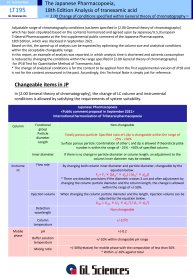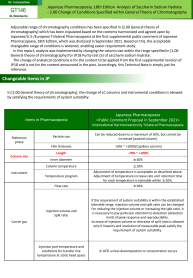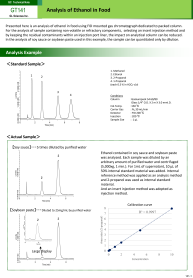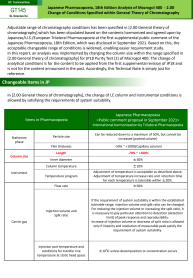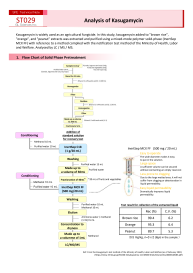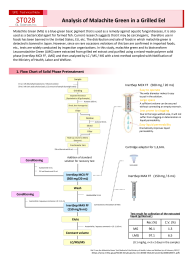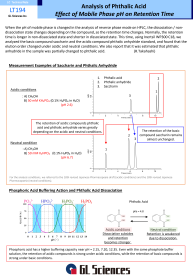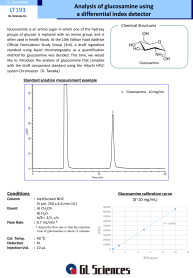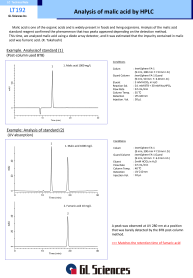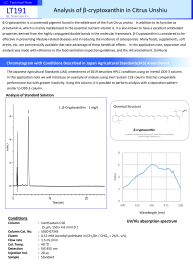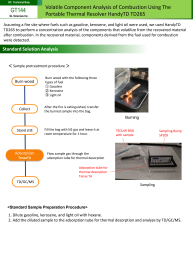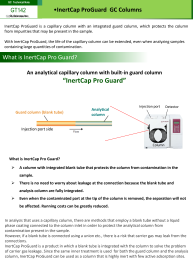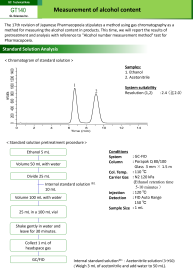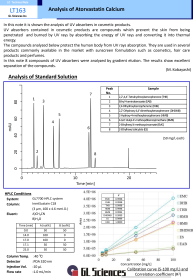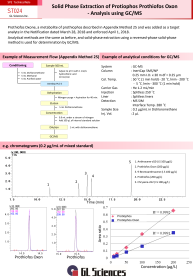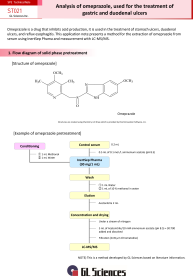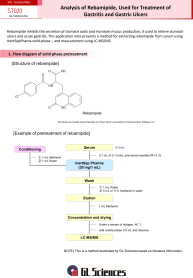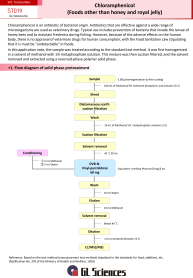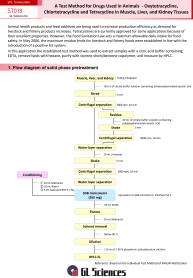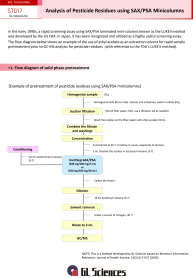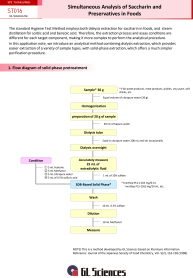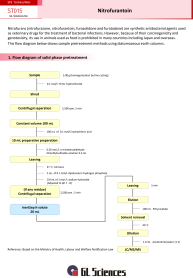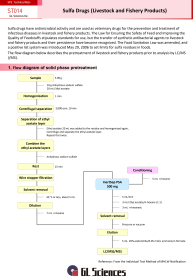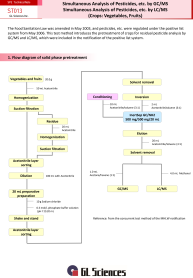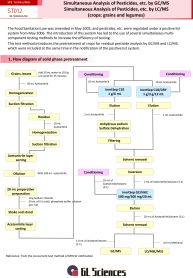-
HPLC Columns
- Close Menu ×
- C18 Columns
- C8 & C4 HPLC Columns
- HILIC HPLC Columns
- PFP & Phenyl HPLC Columns
- Bioseparation LC columns
- SEC HPLC Columns
- Ion Exchange HPLC Columns
- All HPLC Columns
- InertSustain C18 First choice for ultra-high inertness and high durability, delivering superior peak shapes with low back pressure.
- Inertsil ODS-3 Most popular C18, trusted for long-established methods, offering strong retentivity and high loading capacity.
- InertSustain AQ-C18 First choice for high-polarity compounds, delivering strong retention even under 100% aqueous mobile phases.
- Inertsil ODS-3V Validated version of ODS-3, designed for GLP/GMP compliance, ensuring batch-to-batch consistency.
- InertSustainSwift C18 Ultra-inert, fast-separation C18 for high-throughput LC-MS and LC-MS/MS with superior peak symmetry.
- InertSustain AX-C18 Mixed-mode C18 with anion exchange for strong retention of highly polar acidic compounds without ion-pairing.
- All C18 Columns visible-xs
- InertSustain C8 Ultra-inert C8 column for rapid analysis of hydrophobic compounds with symmetric peaks across a wide pH range.
- Inertsil C8 Ultra-pure silica C8 column for rapid analysis of hydrophobic compounds, ideal for legacy methods.
- InertSustainSwift C8 Ultra-inert C8 column for low-polarity analytes, peptides, and oligonucleotides with optimized 200Å pore size.
- Inertsil C8-3 Strong retentivity, very inert, and low back pressure, based on the same silica and bonding as Inertsil ODS-3.
- Inertsil WP 300 Wide-pore C8 column for rapid, high-resolution separation of proteins and peptides with sharper peaks.
- Inertsil C4 Low-retentivity C4 column for rapid analysis of highly hydrophobic compounds like fat-soluble vitamins.
- All C8 & C4 Columns visible-xs
- InertSustain Amide First choice for HILIC mode, offering the strongest retention of polar compounds with superior stability in water-rich conditions.
- Inertsil HILIC Diol-bonded HILIC column for excellent peak shape and strong retention of highly polar basic compounds.
- InertSustain NH2 First choice for sugar analysis, offering superior stability, reproducibility, and compatibility with weakly acidic eluents.
- Inertsil NH2 Aminopropyl column for sugar analysis, highly retentive in normal phase with superior stability and reproducibility.
- ProteoSil HILIC Bioseparation-focused HILIC column, excelling in hydrophilic compound, peptide, glycan, and oligonucleotide analysis.
- All HILIC Columns visible-xs
- InertSustain PFP A pentafluorophenyl-modified column designed for enhanced separation of structurally similar compounds through multiple retention mechanisms, including π-π, dipole, and hydrogen bonding interactions.
- InertSustain Phenyl A directly bonded phenyl group gives the InertSustain Phenyl column unique reversed-phase selectivity, ideal for separating polar compounds and structural isomers via π-π and hydrogen bonding interactions.
- InertSustain Phenylhexyl A phenylhexyl-bonded column that offers complementary selectivity to traditional alkyl-chain columns, providing high inertness, reproducibility, and low back pressure.
Get the Right Column for Your Compound — InstantlyWhat compound are you analyzing?QUICK LINKS- Application Search
- Product Catalogs
- About Us
- Promotions
-
Sample Preparation
- Close Menu ×
- SPE Cartridges & Columns
- Spin Columns
- Proteomics Products
- InertSep QuEChERS kit
- Cleanup/Separating Bulks
- SPE Manifolds
- ALL Sample Preparation
- InertSep C18 Silica sorbent with high end-capping, ideal for lipid removal & pesticide residue analysis.
- InertSep C18-ENV C18 sorbent with low end-capping, optimized for water analysis & anionic surfactant removal.
- InertSep HLB Versatile SPE column for extracting non-polar to highly polar compounds, with a wide pH range (1-14).
- InertSep C8 Silica sorbent with octyl groups, offering weaker retention than C18 for highly retained compounds.
- InertSep SCX Silica-based SPE column with strong cation exchange and non-polar interactions for enhanced retention.
- InertSep SAX Monofunctional C18 sorbent with medium end-capping, allowing secondary interactions for versatile use.
- All SPE Cartridges & Columns visible-xs
- MonoSpin C18 High-permeability spin column for peptide desalting, drug extraction, and fast biological sample preparation.
- MonoSpin ProA Fast Protein A spin column for high-purity IgG antibody purification with >90% recovery.
- MonoSpin C18-CX Mixed-mode spin column with C18 and cation exchange for enhanced basic drug recovery.
- MonoSpin Phospholipid TiO₂/ZrO₂-coated spin column for efficient phospholipid removal and matrix effect reduction.
- MonoSpin SAX Strong anion exchange spin column for fast extraction of acidic drugs with high recovery.
- MonoSpin TiO TiO₂ spin column for phospholipid removal and organophosphorus pesticide purification.
- All Spin Columns visible-xs
- Exosome Purification
- Desalting
- Digestion
- Fractionation
- Phosphopeptide Enrichment
- Centrifuge Accessories
-
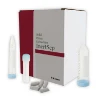 InertSep QuEChERS Kit High-purity extraction and cleanup kit for pesticide residue analysis in food and environmental samples.
InertSep QuEChERS Kit High-purity extraction and cleanup kit for pesticide residue analysis in food and environmental samples.
Get the Right Column for Your Compound — InstantlyWhat compound are you analyzing?QUICK LINKS- Application Search
- Product Catalogs
- About Us
- Promotions
-
GC Columns
- Close Menu ×
- InertCap Series
- TC Series
- GC Accesories
- All GC Columns
- InertCap 1MS General purpose, Hydrocarbons, PCBs, High Volatile solvents, Phenols
- InertCap 1 General purpose, Hydrocarbons, PCBs, High Volatile solvents, Phenols
- InertCap 5MS/Sil General purpose, Halogenated compounds, Phenols, Pesticides, FAME
- InertCap 5MS/NP General purpose, Halogenated compounds, Phenols, Pesticides, FAME
- InertCap 5 General purpose, Halogenated compounds, Phenols, Pesticides, FAME
- InertCap 624MS Residual solvents of Pharmaceuticals, VOCs, Alcohols
- All GC Columns visible-xs
Get the Right Column for Your Compound — InstantlyWhat compound are you analyzing?QUICK LINKS- Application Search
- Product Catalogs
- About Us
- Promotions
-
Instruments
-
 LD249 Gas Leak Detector Compact, easy-to-use leak detector with thermal conductivity sensor for fast, accurate gas detection. Replaces the LD239.
LD249 Gas Leak Detector Compact, easy-to-use leak detector with thermal conductivity sensor for fast, accurate gas detection. Replaces the LD239. -
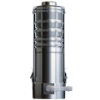 FM4: Air Sampler for PFAS Low-volume air sampler for PFAS enabling comprehensive analysis of both gas and particle phases in a single sampling using stage-optimized materials.
FM4: Air Sampler for PFAS Low-volume air sampler for PFAS enabling comprehensive analysis of both gas and particle phases in a single sampling using stage-optimized materials. -
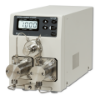 Intelligent Pump UI-22 Series Low-pulsation linear motor pump with precise flow control and bubble-free operation.
Intelligent Pump UI-22 Series Low-pulsation linear motor pump with precise flow control and bubble-free operation. -
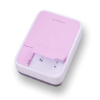 OralChroma Halitosis Measuring Device High-precision breath analyzer using gas chromatography to quantify VSCs in 4 minutes — fast, reliable, and maintenance-free.
OralChroma Halitosis Measuring Device High-precision breath analyzer using gas chromatography to quantify VSCs in 4 minutes — fast, reliable, and maintenance-free.
-
 LD249 Gas Leak Detector Latest model replacing LD239, with thermal conductivity detection for helium, hydrogen, and other gases.
LD249 Gas Leak Detector Latest model replacing LD239, with thermal conductivity detection for helium, hydrogen, and other gases. -
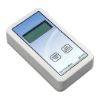 GF1010 Digital Gas Flowmeter Portable, volumetric meter for accurate GC gas flow measurement without gas selection.
GF1010 Digital Gas Flowmeter Portable, volumetric meter for accurate GC gas flow measurement without gas selection.
-
 Intelligent Pump UI-22 Series Low-pulsation linear motor pump with precise flow control and bubble-free operation.
Intelligent Pump UI-22 Series Low-pulsation linear motor pump with precise flow control and bubble-free operation. -
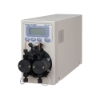 Dual Pump KP-21 Series High-precision, medium to high-pressure pump with RS-232C control and customizable seals.
Dual Pump KP-21 Series High-precision, medium to high-pressure pump with RS-232C control and customizable seals. -
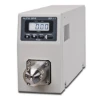 Auto BPR BP-11 Auto Back Pressure Regulator for the UI-22 Series, maintaining stable pressure for consistent flow.
Auto BPR BP-11 Auto Back Pressure Regulator for the UI-22 Series, maintaining stable pressure for consistent flow. -
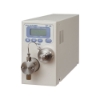 PCS Pump SP-22 Series Single plunger pump with a pressure sensor, pulse control, and real-time pressure display for precise monitoring.
PCS Pump SP-22 Series Single plunger pump with a pressure sensor, pulse control, and real-time pressure display for precise monitoring. -
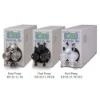 Dual Pump KP-22 Series High-precision, low-pulsation pump with pulse control, real-time pressure display, and RS-232C control.
Dual Pump KP-22 Series High-precision, low-pulsation pump with pulse control, real-time pressure display, and RS-232C control. -
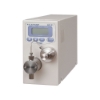 PCS Pump SP-21 Series Cost-effective single plunger pump with pulse control, ideal for basic solvent dispensing.
PCS Pump SP-21 Series Cost-effective single plunger pump with pulse control, ideal for basic solvent dispensing. - All HPLC Pumps visible-xs
-
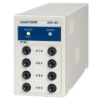 Gastorr AG Series Reliable, CPU-controlled degassing system for low-flow applications with independent chamber design.
Gastorr AG Series Reliable, CPU-controlled degassing system for low-flow applications with independent chamber design. -
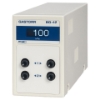 Gastorr BG Series High-performance degassing system with real-time vacuum display and independent chamber design.
Gastorr BG Series High-performance degassing system with real-time vacuum display and independent chamber design. -
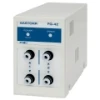 Gastorr FG-42 Solvent degassing system optimized for fluorinated solvents with real-time vacuum display.
Gastorr FG-42 Solvent degassing system optimized for fluorinated solvents with real-time vacuum display. -
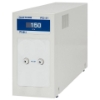 Gastorr PG Series High-flow degassing system for fractionating applications with real-time vacuum display.
Gastorr PG Series High-flow degassing system for fractionating applications with real-time vacuum display. - All Degassing Units visible-xs
QUICK LINKS- Application Search
- Product Catalogs
- About Us
- Promotions
-
-
Accessories
- Close Menu ×
- HPLC Accesories
- SPE Accessories
- GC Accessories
- HPLC Tubing
- Filters
- HPLC Fittings
- Solvent Bottle Caps and Other Accessories
- Micro Splitter Valve
- Peak Shut-off Valve
- Gradient Mixer
- Regulator
- IDEX Accessories
- HPLC Column Hardware and Other Accessories
- SPE Vacuum Manifolds
- SPE Gravity Manifolds
- Cleanup/Separating Bulks
- Glass Chromatography Columns
- General SPE Accessories
QUICK LINKS- Application Search
- Product Catalogs
- About Us
- Promotions
-
Applications & Industries
- Close Menu ×
- Featured
- PFAS Solutions Products and workflows for EPA and ISO-compliant PFAS testing in water, air, and soil.
- Flow Chemistry Solutions Integrated pumps and pressure regulators for continuous, high-temperature flow chemistry reactions.
- Life Science/Bio Products Spin columns and purification tools for antibody capture, protein cleanup, and bioseparation workflows.
- Gas/Air Sampling Equipment Sampling tools for capturing VOCs, aldehydes, and trace gases in environmental and industrial settings.
QUICK LINKS- Application Search
- Product Catalogs
- About Us
- Promotions
-
Resources
- Close Menu ×
- All Resources
QUICK LINKS- Application Search
- Product Catalogs
- About Us
- Promotions
- About
- Contact Us
Search
You have no items in your shopping cart.
Technical Notes
281 records
Technical Note
LT195 - Eighteenth revision Japanese Pharmacopoeia analysis of tranexamic acid -2.00 Condition change within the range specified in the general chromatography-
LT195 - Eighteenth revision Japanese Pharmacopoeia analysis of tranexamic acid -2.00 ...
Liquid Chromatography
Technical Note
Doc #: LT195
Categories: Liquid Chromatography
Technical Note
GT146 - Japanese Pharmacopoeia, 18th Edition Analysis of Saccharin Sodium Hydrate - 2.00 Change of Conditions Specified within General Theory of Chromatography
GT146 - Japanese Pharmacopoeia, 18th Edition Analysis of Saccharin Sodium Hydrate - ...
Gas Chromatography
Adjustable range of chromatography conditions has been specified in [2.00 General theory of chromatography] which has been stipulated based on the contents harmonized and agreed upon by Japanese/U.S./European Trilateral Pharmacopoeia at the first supplemental public comment of Japanese Pharmacopoeia, 18th Edition, which was disclosed in September 2021. Based on this, the acceptable changeable range of conditions is widened, enabling easier requirement study.
In this report, analysis was implemented by changing the column size within the range specified in [2.00 General theory of chromatography] for JP18 Purity test (5) of saccharin sodium hydrate. The change of analytical conditions is for the content to be applied from the first supplemental revision of JP18 and is not for the content ...
Technical Note
Doc #: GT146
Categories: Gas Chromatography
Technical Note
<style type="text/css"><!--td {border: 1px solid #ccc;}br {mso-data-placement:same-cell;}--></style>
<span data-sheets-value="{"1":2,"2":"Presented here is an analysis of ethanol in food using FID mounted gas chromatograph dedicated to packed column.For the analysis of sample containing non-volatile or refractory components, selecting an insert injection method and by keeping the residual contaminants within an injection port liner, the impact on analytical column can be reduced. In the analysis of soy sauce or soybean paste used in this example, the sample can be quantitated only by dilution."}" data-sheets-userformat="{"2":513,"3":{"1":0},"12":0}">Presented here is an analysis of ethanol in food using FID mounted gas ...
Technical Note
Doc #: GT141
Categories: Gas Chromatography
Technical Note
GT145 - Japanese Pharmacopoeia, 18th Edition Analysis of Macrogol 400 - 2.00 Change of Conditions Specified within General Theory of Chromatography
GT145 - Japanese Pharmacopoeia, 18th Edition Analysis of Macrogol 400 - 2.00 Change of ...
Gas Chromatography
<style type="text/css"><!--td {border: 1px solid #ccc;}br {mso-data-placement:same-cell;}--></style>
<span data-sheets-value="{"1":2,"2":"Adjustable range of chromatography conditions has been specified in [2.00 General theory of chromatography] which has been stipulated based on the contents harmonized and agreed upon by Japanese/U.S./European Trilateral Pharmacopoeia at the first supplemental public comment of the Japanese Pharmacopoeia, 18th Edition, which was disclosed in September 2021. Based on this, the acceptable changeable range of conditions is widened, enabling easier requirement study.\r\nIn this report, an analysis was implemented by changing the column size within the range specified in [2.00 General theory of chromatography] for JP18 Purity Test ...
Technical Note
Doc #: GT145
Categories: Gas Chromatography
Technical Note
Kasugamycin is widely used as an agricultural fungicide. In this study, kasugamycin added to "brown rice", "orange", and "peanut" extracts was extracted and purified using a mixed-mode polymer solid-phase (InertSep MCX FF) with reference to a method complied with the notification test method of the Ministry of Health, Labor and Welfare. Analysed by LC / MS / MS.
Technical Note
Doc #: ST029
Categories: Sample Preparation
Technical Note
ST028 - Analysis of Malachite Green in a Grilled Eel
ST028 - Analysis of Malachite Green in a Grilled Eel
Sample Preparation
Malachite Green (MG) is a blue-green basic pigment that is used as a remedy against aquatic fungal diseases, it is also used as a bactericidal agent for farmed fish. Current research suggests that it may be carcinogenic, therefore use in foods has been banned in the United States, EU, etc. The distribution and sale of foods in which malachite green is detected is banned in Japan. However, since on rare occasions violations of this ban are confirmed in imported foods, etc., tests are widely conducted by inspection organizations. In this study, malachite green and its biotransform Leucomalachite Green (LMG) were extracted from grilled eel extract and purified using a mixed-mode polymer solid phase (InertSep MCX FF, LMG) and then analyzed by LC / MS / MS with a test method complied with ...
Technical Note
Doc #: ST028
Categories: Sample Preparation
Technical Note
LT194 - Analysis of phthalic acid -Effect of mobile phase pH on retention time
LT194 - Analysis of phthalic acid -Effect of mobile phase pH on retention time
Liquid Chromatography
When the pH of mobile phase is changed in the analysis of reverse phase mode on HPLC, the dissociation / non-dissociation state changes depending on the compound, so the retention time changes. Normally, the retention time is longer in non-dissociated state and shorter in dissociated state. This time, using Inertsil WP300 C18, we analyzed the basic compound saccharin and the acidic compound phthalic anhydride standard, and found that the elution order changed under acidic and neutral conditions. We also report that it was estimated that phthalic anhydride in the sample was partially changed to phthalic acid.
Technical Note
Doc #: LT194
Categories: Liquid Chromatography
Technical Note
LT193 - Analysis of glucosamine using a differential index detector
LT193 - Analysis of glucosamine using a differential index detector
Liquid Chromatography
Glucosamine is an amino sugar in which one of the hydroxy groups of glucose is replaced with an amino group, and is often used in health foods. At the 10th Edition Food Additive Official Formulation Study Group (3rd), a draft ingredient standard using liquid chromatography as a quantification method for glucosamine was decided. This time, we would like to introduce the analysis of glucosamine that complies with the draft component standard using the Hitachi HPLC system Chromaster.
Technical Note
Doc #: LT193
Categories: Liquid Chromatography
Technical Note
Malic acid is one of the organic acids and is widely present in foods and living organisms. Analysis of the malic acid standard reagent confirmed the phenomenon that two peaks appeared depending on the detection method. This time, we analyzed malic acid using a diode array detector, and it was estimated that the impurity contained in malic acid was fumaric acid.
Technical Note
Doc #: LT192
Categories: Liquid Chromatography
Technical Note
LT191 - Analysis of β-cryptoxanthin in Citrus Unshiu
LT191 - Analysis of β-cryptoxanthin in Citrus Unshiu
Liquid Chromatography
ß-Cryptoxanthin is a carotenoid pigment found in the edible part of the fruit Citrus unshiu. In addition to its function as provitamin A, which is mainly metabolized to the essential nutrient vitamin A, it is also known to have a excellent antioxidant properties derived from the highly conjugated double bonds in the molecular framework. ß-Cryptoxanthin is considered to be effective in preventing lifestyle-related diseases and in reducing the incidence of osteoporosis. Many foods, supplements, soft drinks, etc. are commercially available that take advantage of these beneficial effects. In this application note, separation and analysis was made with reference to the food sanitation inspection guidelines, and the JAS amendment.
Technical Note
Doc #: LT191
Categories: Liquid Chromatography
Technical Note
GT144 - Volatile Component Analysis of Combustion Using The Portable Thermal Resolver HandyTD TD265
GT144 - Volatile Component Analysis of Combustion Using The Portable Thermal Resolver ...
Gas Chromatography
Assuming a fire site where fuels such as gasoline, kerosene, and light oil were used, we used HandyTD TD265 to perform a concentration analysis of the components that volatilize from the recovered material after combustion. In the recovered material, components derived from the fuel used for combustion were detected.
Technical Note
Doc #: GT144
Categories: Gas Chromatography
Technical Note
InertCap ProGuard is a capillary column with an integrated guard column, which protects the column from impurities that may be present in the sample.? With InertCap ProGuard, the life of the capillary column can be extended, even when analyzing samples containing large quantities of contamination.
Technical Note
Doc #: GT142
Categories: Gas Chromatography
Technical Note
The 17th revision of Japanese Pharmacopoeia stipulates a method using gas chromatography as a method for measuring the alcohol content in products. This time, we will report the results of pretreatment and analysis with reference to "Alcohol number measurement method" test for Pharmacopoeia.
Technical Note
Doc #: GT140
Categories: Gas Chromatography
Technical Note
LT163 - Analysis of UV Absorbers in Cosmetic Products
LT163 - Analysis of UV Absorbers in Cosmetic Products
Liquid Chromatography
In this note, it is shown the analysis of UV absorbers in cosmetic products.<br />UV absorbers contained in cosmetic products are compounds that prevent the skin from being penetrated and burned by UV rays by absorbing the energy of UV rays and converting it into thermal energy.<br />The compounds are analyzed below. They are used in several products commonly available in the market with sunscreen formulation such as cosmetics, hair care products, and perfumes.<br />In this note, 8 compounds of UV absorbers were analyzed by gradient elution. The results show an excellent separation of the compounds.
Technical Note
Doc #: LT163
Categories: Liquid Chromatography
Technical Note
ST024 - Solid Phase Extraction of Protiophos Prothiofos Oxon - Analysis Using GC/MS
ST024 - Solid Phase Extraction of Protiophos Prothiofos Oxon - Analysis Using GC/MS
Sample Preparation
Technical Note
Doc #: ST024
Categories: Sample Preparation
Technical Note
ST021 - Analysis of Omeprazole, Used for the Treatment of Gastric and Duodenal Ulcers
ST021 - Analysis of Omeprazole, Used for the Treatment of Gastric and Duodenal Ulcers
Sample Preparation
Technical Note
Doc #: ST021
Categories: Sample Preparation
Technical Note
ST020 - Analysis of Rebamipide, Used for Treatment of Gastritis and Gastric Ulcers
ST020 - Analysis of Rebamipide, Used for Treatment of Gastritis and Gastric Ulcers
Sample Preparation
Technical Note
Doc #: ST020
Categories: Sample Preparation
Technical Note
ST019 - Chloramphenicol (Foods Other than Honey and Royal Jelly)
ST019 - Chloramphenicol (Foods Other than Honey and Royal Jelly)
Sample Preparation
Technical Note
Doc #: ST019
Categories: Sample Preparation
Technical Note
ST018 - A Test Method for Drugs Used in Animals - Oxytetracycline, Chlortetracycline and Tetracycline in Muscle, Liver, and Kidney Tissues
ST018 - A Test Method for Drugs Used in Animals - Oxytetracycline, Chlortetracycline ...
Sample Preparation
Technical Note
Doc #: ST018
Categories: Sample Preparation
Technical Note
ST017 - Analysis of Pesticide Residues Using SAX/PSA Minicolumns
ST017 - Analysis of Pesticide Residues Using SAX/PSA Minicolumns
Sample Preparation
Technical Note
Doc #: ST017
Categories: Sample Preparation
Technical Note
ST016 - Simultaneous Analysis of Saccharin and Preservatives in Foods
ST016 - Simultaneous Analysis of Saccharin and Preservatives in Foods
Sample Preparation
Technical Note
Doc #: ST016
Categories: Sample Preparation
Technical Note
Technical Note
Doc #: ST015
Categories: Sample Preparation
Technical Note
ST014 - Sulfa Drugs (Livestock and Fishery Products)
ST014 - Sulfa Drugs (Livestock and Fishery Products)
Sample Preparation
Technical Note
Doc #: ST014
Categories: Sample Preparation
Technical Note
ST013 - Simultaneous Analysis of Pesticides, etc. by GC/MS Simultaneous Analysis of Pesticides, etc. by LC/MS (Crops: Vegetables, Fruits)
ST013 - Simultaneous Analysis of Pesticides, etc. by GC/MS Simultaneous Analysis of ...
Sample Preparation
Technical Note
Doc #: ST013
Categories: Sample Preparation
Technical Note
ST012 - Simultaneous Analysis of Pesticides, etc. by GC/MS Simultaneous Analysis of Pesticides, etc. by LC/MS (Crops: Grains and Legumes)
ST012 - Simultaneous Analysis of Pesticides, etc. by GC/MS Simultaneous Analysis of ...
Sample Preparation
Technical Note
Doc #: ST012
Categories: Sample Preparation
Refine

